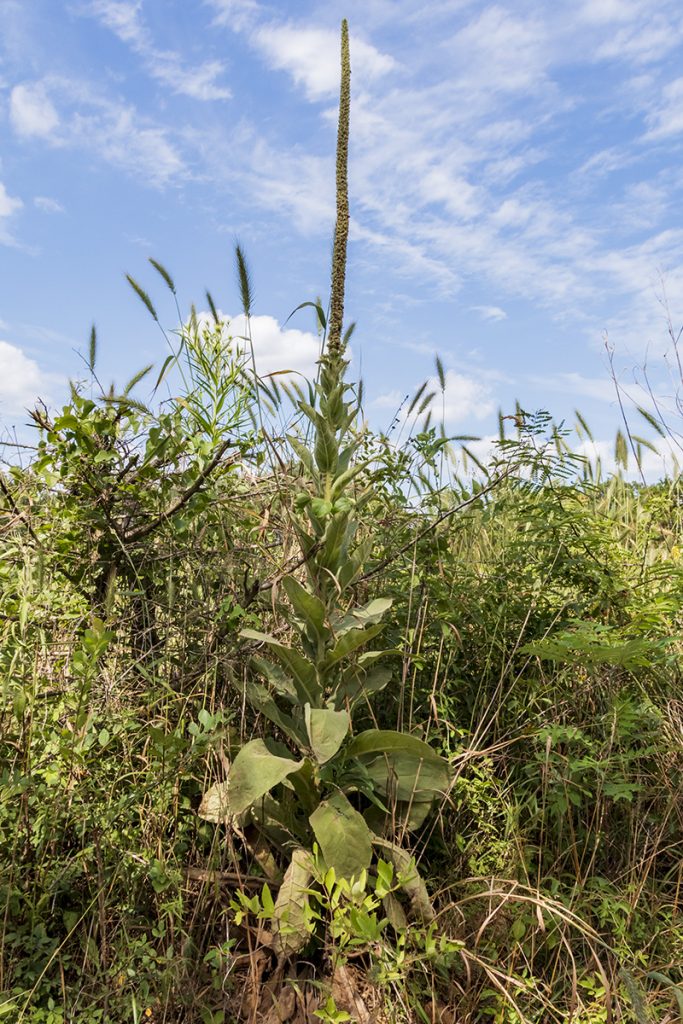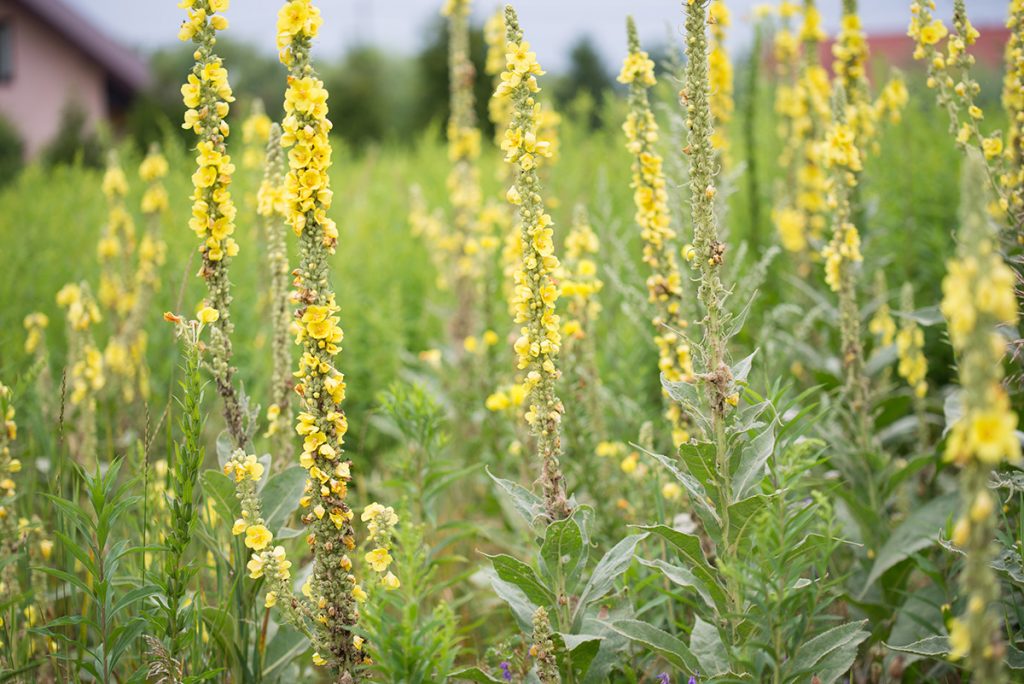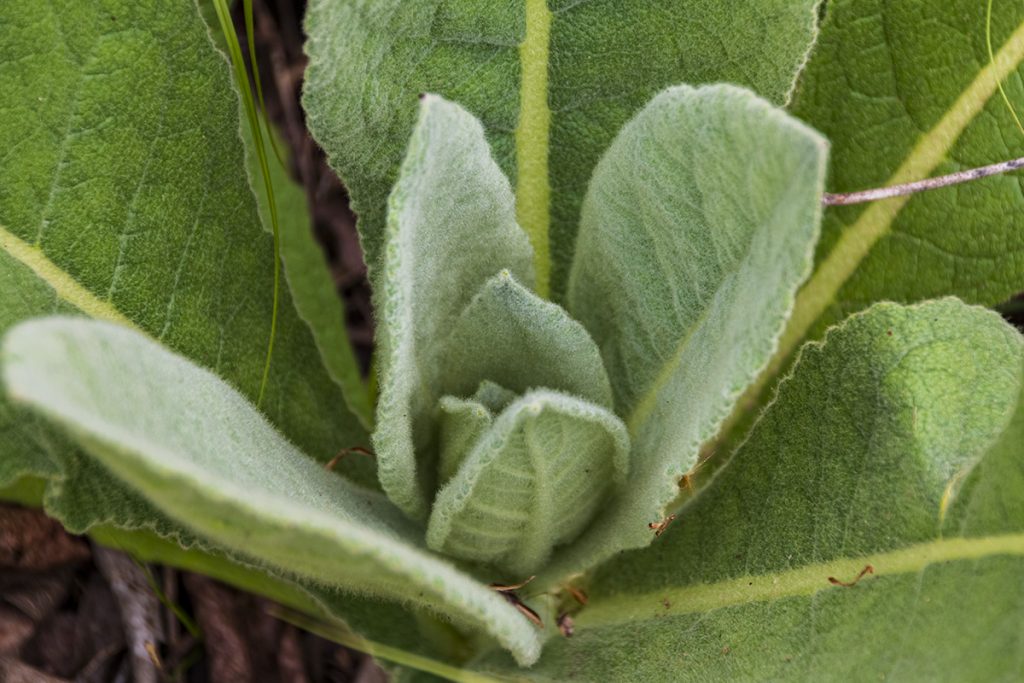Mullein, also known as Verbascum thapsus, is a herbaceous plant with a rich history of medicinal uses. From ancient Greece to modern times, mullein has been used to treat respiratory ailments, skin conditions, and more. But what makes this plant so special? In this article, we’ll explore the fascinating history and versatile uses of mullein, including its potential as a natural remedy for various health issues. So if you’re curious about this intriguing herb, read on to learn more!
Description
Mullein is a plant in the family Verbascum. In the US, it is known as “common mullein”. Mullein’s benefits include effects for health and can be used for several specific ailments you can treat at home. Mullein has been used for thousands of years in traditional medicine to treat a host of ailments. It is probably most well-known for its uses for ailments of the respiratory tract. But there is more to Mullein than just being used to treat respiratory ailments.
There are over 300 species of mullein, with some being perennial and some being biennial. Common mullein (Verbascum thapsus) is the species of mullein that is most prevalent in the Ozarks.
Common Mullein grows wild throughout the U.S., including the Ozarks. You will find mullein growing in dry gravel or sandy soils. It grows best in disturbed soils or after a fire. The seeds are commonly dropped no more than 3-15 feet from the parent plant. The seeds can lie dormant in the soil for decades. In one study it was found they may lie dormant for up to 100 years.
The plant is biennial so in the first year, it grows as a rosette close to the ground. The leaves are large and can reach 20 inches long. The leaves are covered by fine hairs which can give them an almost silver appearance in certain lighting. The leaves are soft and wide, which led to the common name “cowboy toilet paper” given to it in the western U.S.
In the second year, mullein produces a flowering stalk up to 6 feet tall. This stalk is covered with small yellow flowers that bloom at different times during the blooming season. They usually bloom from June through August with only a few flowers opening at a time. The flowers only bloom for a day. If they are not pollinated by insects the flowers can self-pollinate.
Mullein Medicinal Uses
Common Mullein has been used medicinally for centuries. Around 2000 years ago the Greek physician Dioscorides recommended using the plant for lung diseases. More recently the leaves were smoked in an attempt to treat lung ailments. The leaves are also dried to brew a tea which is used to remove mucus from the lungs. The dried roots have been used to create a poultice to treat skin ailments. The powdered roots have also been used as a treatment for athlete’s foot fungus.
The most common medicinal use of mullein is to dry the leaves and brew a tea to treat coughs, colds, and sore throat. Mullein contains potent antioxidant and anti-inflammatory compounds believed to calm and relieve inflammation in the respiratory tract. It has been used as a folk remedy for asthma, COPD, and other respiratory conditions. The plant contains up to 3% mucilage. This substance is thought to account for the plant’s soothing effect on the mucus membranes of the body. The plant also contains saponins which are believed to thin mucus and act as an expectorant.

The anti-inflammatory properties of mullein have been used in folk medicine to treat skin conditions such as burns and bruises. The tea from the dried leaves has been consumed to treat other conditions besides those in the respiratory tract. It has been used internally to treat infections of the digestive and urinary tracts including vaginal yeast infections. It can be helpful for infections of the colon and kidneys as well.
Painful ear infections can also be treated with the oil extracted from mullein. A study published in 2001 found that ear drops using extracted oil from mullein were just as effective in relieving and treating earache in children as anesthetic prescription ear drops.
Since the anti-inflammatory effects of mullein are well known, another useful way to use mullein tea is in the treatment of bursitis and other painful inflammation of the joints and ligaments. You can drink the tea, or for spot treatment, you can soak a cloth in the tea and apply it to the affected area several times a day to decrease inflammation in the area.
How To Use Mullein Medicinally
Mullein Tea
You can collect mullein leaves and flowers and dry them to be used in your medicinal tea. Simply dry the leaves and/or flowers and save them in an airtight jar or another container. To brew the tea simply place 1 cup of boiling water in a mug and add 1-2 teaspoons of dried leaves or flowers to the mug. Let this steep for 10-15 minutes and strain through a coffee filter to remove the plant parts. Drink at least 1 cup per day until symptoms improve. *Caution-you should strain the tea through a coffee filter or other fine filter because the fine hairs on the leaves have been reported to be an irritant to some individuals.
Oil Extraction
You can make an oil extraction for earaches and topical application using the hot or cold extraction method. The oil should be stored in a dark amber bottle to prevent spoilage from sunlight.
Hot Oil Extraction
Combine 1 cup of flowers and 1/2 cup of olive oil in a glass double boiler and heat on low heat for 3 hours. Strain through a fine cheesecloth and store as noted above.
Cold Oil Extraction
Cover flowers with olive oil in a glass jar with a lid and place it on a sunny windowsill for 7-10 days. Strain through a cheesecloth as noted above to remove plant parts and store it in a dark amber bottle away from direct sunlight.
Tincture
You can create a tincture using mullein fresh or dried. To create a tincture place the plant material in a glass jar with a tight-fitting lid and cover the plant material with grain alcohol or vodka. Don’t use rubbing alcohol as you will be ingesting the tincture, and rubbing alcohol is toxic if swallowed. Only use alcohol suitable for drinking. You should use an alcohol of 80 proof (40%) or greater.
Place the jar in a dark place and shake the jar every 2-3 days as you think about it. You can increase the concentration of your tincture by squeezing out the liquid from the plant material and straining it, then adding more plant material to the mixture. It can take up to 8-12 weeks to get a good tincture.
Interactions
Short-duration use, when used properly, is unlikely to cause any side effects. Some reports of contact dermatitis from the hairs on the leaf have been reported. Some reports suggest that mullein may interfere with diabetic medications. There have also been reports that it may intensify the effects of some muscle relaxants and lithium.
Always talk to your doctor if you plan to use any natural medicinal plants if you currently use prescription medications. Be sure and start with small amounts at first to see how your body reacts to any wild medicinal plants.
Mullein Benefits
Common mullein contains flavonoids, saponins, tannins, terpenoids, glycosides, carbohydrates, proteins, fats, and oils. The leaves contain a substance known as mucilage, which is believed to be the main constituent that helps to loosen phlegm in the airways of the lungs. The expectorant effects are believed to be caused by the saponins contained in the plant.
Let’s examine some of the traditional medicinal uses for Mullein, and some that may not be so well-known.
Mullein Benefits for Respiratory Conditions
One of the most well-known uses for mullein is to help with respiratory ailments. As noted earlier, mullein contains a compound known as mucilage, which helps to thin mucus. This makes it easier to cough up and clear mucus from the lungs.
Traditionally, the leaves were used to brew tea, which was used to treat a wide range of respiratory and upper airway issues. These include coughs, sore throat, bronchitis, tonsilitis, asthma, and COPD. In addition to the mucilage, mullein also contains constituents with anti-inflammatory and antioxidant properties. These properties make it an effective at-home treatment for colds, or the flu.
Although mullein leaves have been used traditionally by smoking in a pipe to treat respiratory issues, that is not the most effective way to get the effects of mullein. It is preferable to use it in a tincture or infusion.
Antimicrobial
A review of the literature published in 2022 found that “Emerging literature based on experimental studies on V. thapsus demonstrates various biological and pharmacological properties, including antiviral, antioxidant, analgesic, sedative, anti-inflammatory, hypnotic, antibacterial, antifungal, as well as anticancer activities”.
Since it contains antimicrobial properties it may be useful as an adjunct treatment for colds or the flu. It might also be useful in treating fungal infections due to its antifungal properties.
Helps with Hemorrhoids
Another of the most well-known uses for mullein is in the treatment of hemorrhoids. The anti-inflammatory action of mullein has been used by either making a water decoction and using it as a sitz bath, or maceration of the leaves and direct application to the site. The anti-inflammatory properties match well with treating hemorrhoids because they are caused by inflammation of hemorrhoidal tissues.
Heals the Digestive System
It is used to treat a variety of inflammatory issues of the digestive tract. These include gastric inflammation, tooth and gum inflammation, and inflammatory diseases of the liver and gall bladder. It has also been used to treat diarrhea and constipation. You can create a mouthwash with the tea and use it to decrease the swelling and pain from gum issues or toothache.
Treat Earache
Another common folk use for mullein is to infuse an oil with the flowers and place a few drops in the ear to relieve earache. It is believed that the anti-inflammatory properties present in the constituents from the flowers, along with the carrier oil used to extract the constituents, help to relieve the pain and inflammation inside the ear canal. Don’t use this if the eardrum is perforated.
Aches and Pains
Another of the many mullein benefits is to use the oil to rub into sore muscles and joints. This has been a treatment used for rheumatism, arthritis, and other inflammatory conditions. Besides helping to relieve inflammation in joints and other areas, mullein has also been used to help with inflammatory skin conditions such as eczema and psoriasis.
Conclusion
Mullein is a wild medicinal plant that you can harvest and use almost anywhere in the Ozarks. Once you learn to identify this plant in the wild you can plan to come back and harvest the leaves, flowers, or roots for use in your wild plant medicine arsenal. Please harvest responsibly and leave some plants to mature and seed, so your wild medicine chest can remain stocked for you and future generations. If you prefer to purchase products you can purchase leaves and flowers, as well as a host of products made with mullein.
Be sure and check out our list of articles to discover a wealth of information on other wild edible and medicinal plants.
FAQs:
Q: What is the best way to take mullein for the lungs?
A: The best way to take mullein for lung health is through tea or tincture. While smoking the leaves was done historically, it is not recommended. Mullein can help soothe the respiratory system and reduce inflammation in the lungs.
Q: Does mullein have side effects?
A: Mullein is generally safe to use, but some people may experience mild side effects such as upset stomach, diarrhea, or skin irritation. If you experience any serious side effects, stop using mullein and consult with your healthcare provider.
Q: Can you eat mullein?
A: While mullein leaves and flowers are edible, they are not commonly eaten due to their fuzzy texture. Instead, mullein is often used as an herbal remedy for respiratory and other health issues.
Q: Does mullein really work for the lungs?
A: Yes, mullein has been used for centuries to help support lung health and reduce inflammation in the respiratory system. Scientific research also supports the use of mullein for respiratory issues.
Q: Can you take too much mullein?
A: It is possible to take too much mullein, which can lead to side effects such as nausea, vomiting, and diarrhea. Always follow recommended dosages and consult with your healthcare provider before using mullein.
Q: How do you use mullein oil for earaches?
A: Mullein oil can be used as ear drops to help soothe earaches and ear infections. To use, warm the oil slightly and place a few drops in the affected ear while lying on your side. Allow the oil to sit in the ear for a few minutes before draining.
Q: How do you make mullein oil for earaches?
A: To make mullein oil for earaches, steep fresh or dried mullein flowers in a carrier oil such as olive oil or coconut oil for several weeks. Strain the oil and store it in a dark glass bottle for future use.
Q: How do you use oil for an ear infection?
A: Mullein oil can be used as ear drops to help soothe ear infections. Warm the oil slightly and place a few drops in the affected ear, while lying on your side. Allow the oil to sit in the ear for a few minutes before draining. Consult with your healthcare provider if your symptoms persist or worsen.

